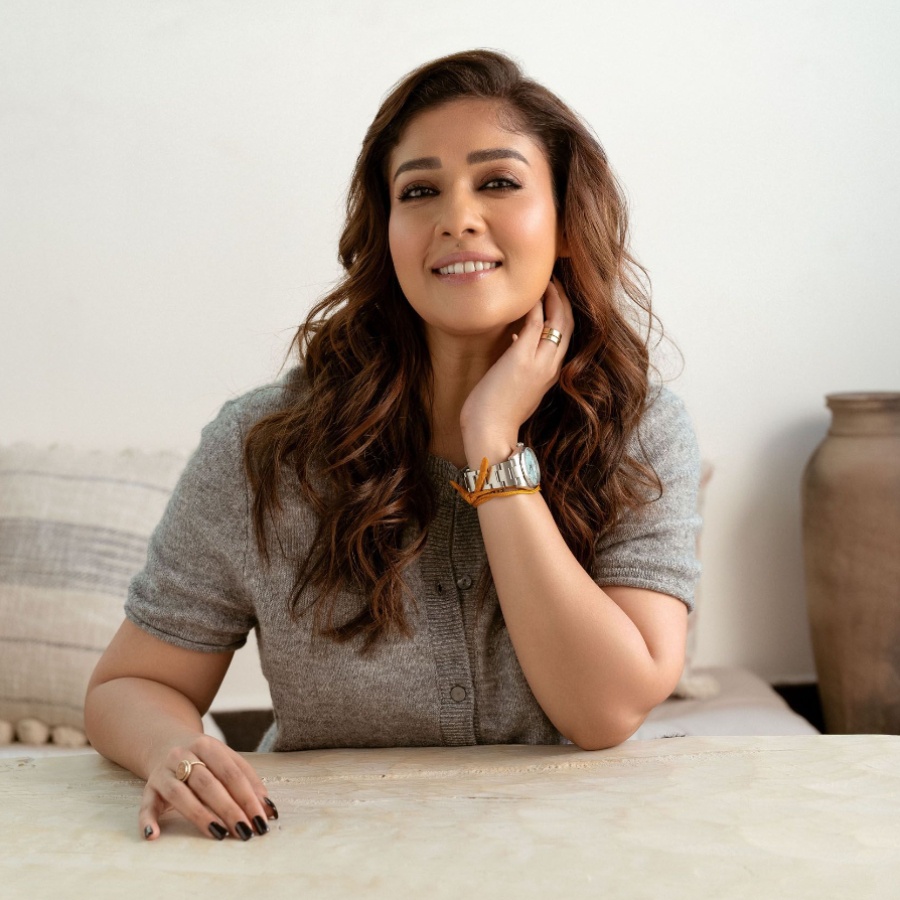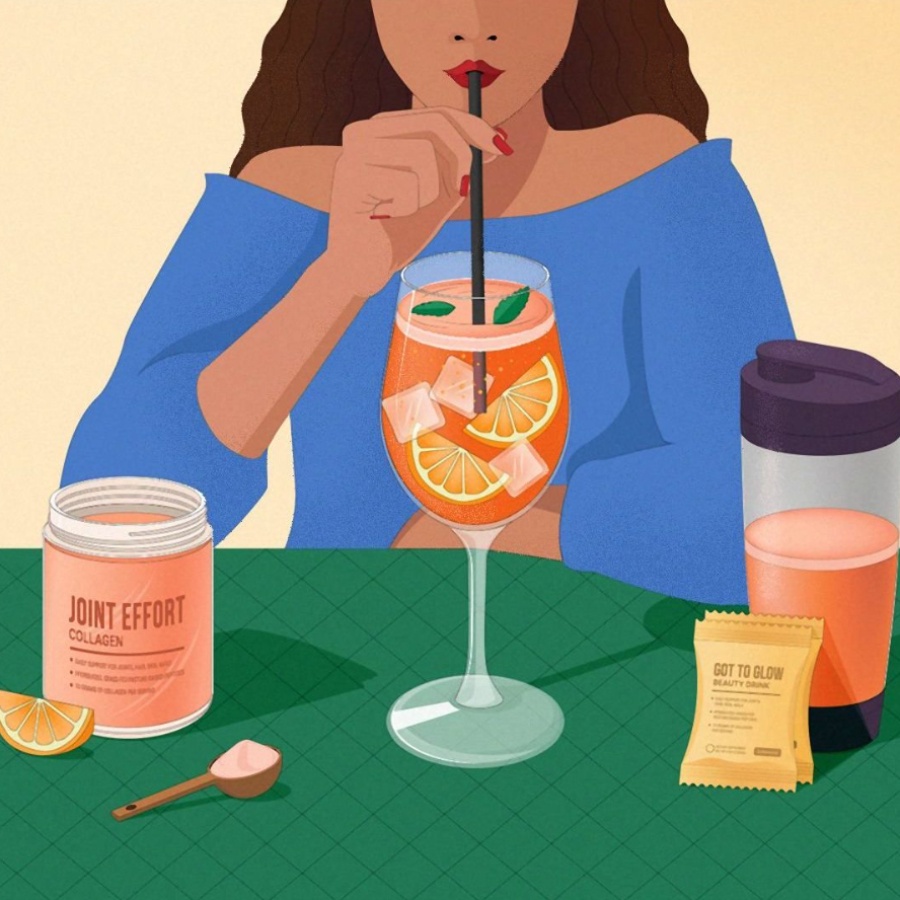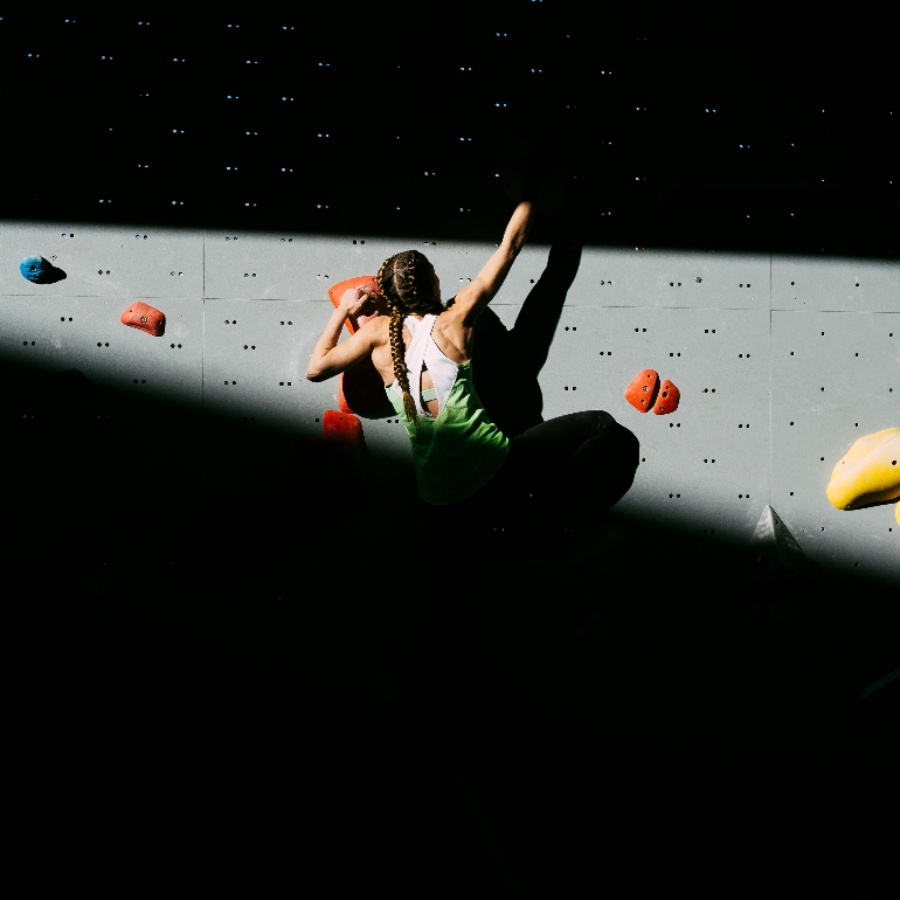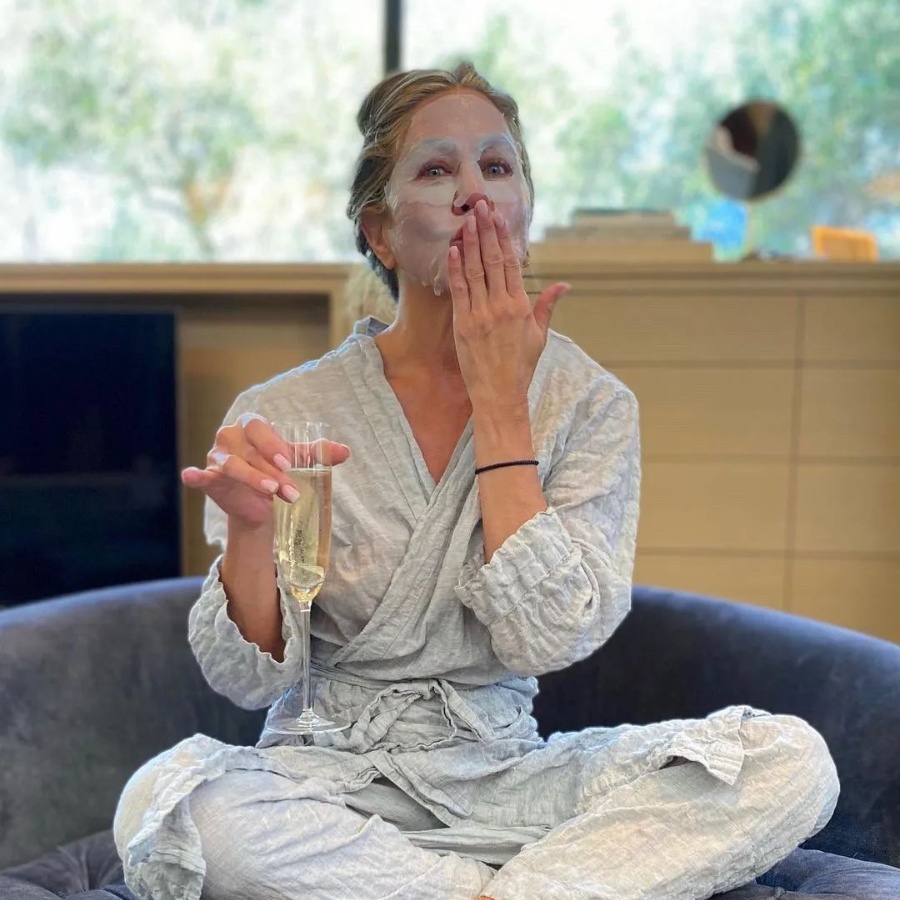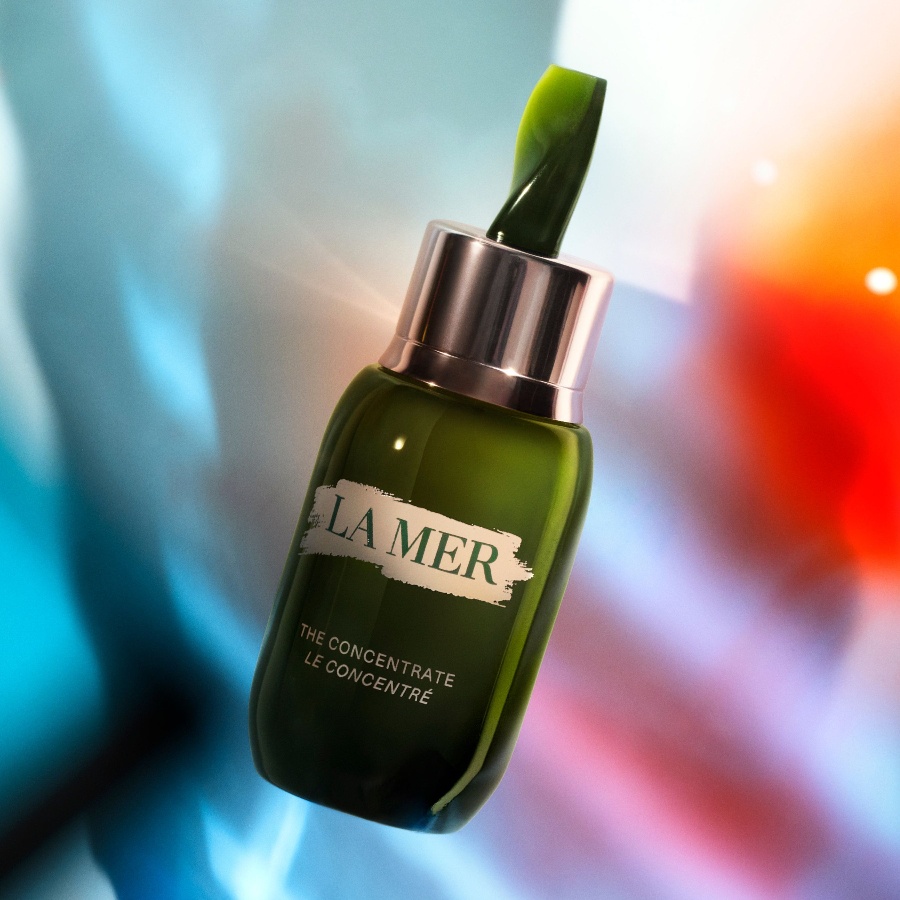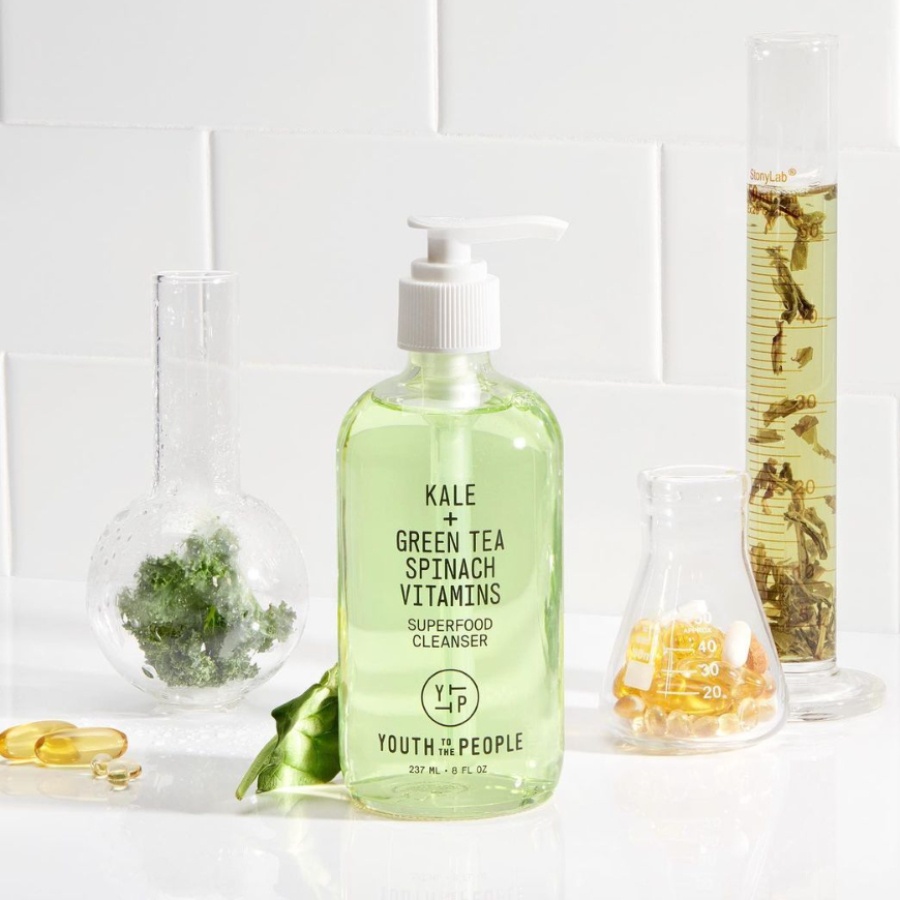Growing up in the ’90s, you’d see more Fair & Lovely billboards than you did McDonald’s on the streets of any given Indian metropolis. Fair skin wasn’t a quiet preference whispered in the ear of Sima Aunty; it was a matter of open favour. The product’s 2020 rebrand to Glow & Lovely was an attempt to move away from the controversial nature of its goal while still winking at—and reaching—its target audience of fair skin aspirants. Today, the phrase ‘anti-ageing’ seems to be experiencing a similar coerced transfiguration. It is no longer cool to shame someone for getting older. But beauty companies still want their target demo to avoid the prospect of looking it.
Shamika Haldipurkar, Founder of beauty brand D’You, believes the phrase has always had a “certain fear-mongering energy”. The beauty industry has played on the fear of ageing for decades now. “Today’s consumer does not appreciate that kind of messaging. There are many ways to rephrase it, and we’re working on doing that for our products, too.”
It’s the villainisation of the advent of age—and its sexist undercurrent—that is finally being taken issue with. The prefix ‘anti’ before ‘ageing’ is proof enough of a systemic problem, one that profits off putting women in the bullseye. “The phrase ‘anti-ageing’ acts like it’s something to be combatted, suggesting that ageing is undesirable,” says dermatologist Dr Geetika Mittal Gupta. “It also primarily targets women’s concerns, and the beauty industry has employed the term ‘anti-ageing’ while using young models or heavily edited images to promote unachievable ideals.” Adds digital beauty creator Vasudha Rai, “You’ll have 25-year-olds or even teenagers modelling for wrinkle creams and under-eye gels.” “They’re photoshopped, airbrushed. it sets unrealistic expectations. That’s problematic.”
However, while the term ‘anti-ageing’ appears less on bottles and tubes, and the idiolect is clearly changing for the beauty industry, the formulas are the same. The customer in question still wants results linked inextricably with the anti-ageing product, and with the visual of youth itself. The result in demand is still tighter, smoother, hydrated skin that bears little to no markers of time, such as spots, wrinkles, or skin tags.
To the skincare savant, a mental glossary of ingredients that offer the properties of an anti-ageing product, are common parlance; retinoids, vitamin C, peptides, hydroquinone, kojic acid, alpha hydroxy acids (AHAs), vitamin E, polyphenols—the list goes on. To the novice, the sell then becomes a new target concern that overlaps considerably on the Venn diagram of ‘youthfulness’. Rai points out that the hardcore ones will always focus on the ingredients. “The best serums and products on the market do not use the word anti-ageing at all. They just mention the ingredients and skin benefits.”
For those less in the loop about formulas, the shorthand includes labels like ‘hydrating’, ‘renewing’, ‘firming’, and ‘brightening’. “Several skincare products aren’t specifically marketed as anti-ageing, but still offer rejuvenating properties,” Poonam Singh, national trainer for Biologique Recherche (India), points out. “Hydrating moisturisers can plump the skin and reduce the appearance of fine lines, while chemical exfoliants improve skin texture and promote cell turnover, resulting in a more youthful appearance. Many serums, even those focused on hydration or brightening, enhance skin tone and texture. Facial oils nourish the skin and reduce dryness and dullness. Lightweight essences help hydrate skin, enhancing texture and radiance.”
“Dermatologists widely agree that sunscreen and moisturiser are the two most impactful products to combat ageing,” says Gupta, and Haldipurkar adds that most antioxidants also fall into this category. “Sunscreens are actually one of the best products for preserving youthful skin, even though they’re not typically marketed that way,” says Prachi Bhandari, co-founder and head of research, Aminu Wellness. “Another great example is exfoliants with AHAs, which smoothe skin and promote cell turnover, giving you a fresher, more radiant look without being labelled specifically for age prevention.”
Interestingly, a counter movement has simultaneously arisen—a growth in ownership of having ‘work done’. It seems to negate the movement against ageism at first glance, but a turn to treatments and procedures is definitely on the uptick. A report by ResearchAndMarkets.com (2023) finds an upward trend in minimally invasive facial procedures among Indian women. Similarly, Impact of Social Media on Cosmetic Surgery in India (Journal of Cutaneous and Aesthetic Surgery, 2020) explores ‘selfie dysmorphia’ and the role of social media in the increased demand for cosmetic surgery in India, with a specific focus on facial procedures.
“Most customers typically do not rely solely on skincare products,” says Singh. “Instead, there is a growing trend toward combining skincare with cosmetic procedures—both invasive and non-invasive. Many clients seek cosmetic treatments such as Botox, fillers, and laser therapies to achieve more immediate or dramatic results, using skincare products to complement these procedures and maintain their skin’s health and appearance.” Rai herself is an advocate for skincare and gentler, non-invasive treatments, and finds herself thrown by people who choose a clumsy quick fix over thoughtful skincare. “I know a few people who are not into skincare at all—who won’t even wear sunscreen. But they will visit their dermatologist and get a deep peel or laser treatment to undo all the damage they’ve imposed on their own skin.”
Mittal highlights newer treatments that have been gaining traction. “Salmon sperm injections, also known as polynucleotide injections, are a type of skin booster. Salmon sperm is rich in micronutrients, exosomes, and growth factors, including high concentrations of polynucleotides (DNA fragments). These components are believed to promote skin cell growth, reduce inflammation, and prevent cell death. There are Pink Shooters, containing 56 components that enhance the vitality of fibroblasts—the building blocks of our tissues—resulting in improved skin structure and resilience. There’s Emface, a painless, radical, non-invasive treatment that combines radiofrequency with facial electromagnetic stimulation (HIFES), reducing wrinkles and increasing muscle density. And, of course, Morpheus8, a treatment that blends minimally invasive radiofrequency treatment with micro-needling to trigger elastin and collagen production, contour fat, and tighten fibres.”
For the skin-serious, the procedures—both invasive and non—are the meat and potatoes, and products fall naturally into a support category. “To somebody who is very serious about their skin, supplements plus skin care plus procedures are the trifecta—they go hand in hand,” Rai says. Bhandari still believes the springboard is skincare products, and “many also choose procedures and facial treatments that provide their skin with an extra boost.”
At its core, all the benefits an anti-ageing product once brought to the table are still very much on the menu—and in demand. The goal, for the average skincare customer, is to preserve and protect the skin qualities associated with ‘youth’: hydration, brightness, firmness, et cetera. A no-shame era has led to movements on both ends—to ‘age’ gracefully (let the sunspots fall where they may) and to treat and fix things without the bashfulness of before. The primary driver for women’s skincare is still the desire to look younger—with an evolved label rebrand, of course.

